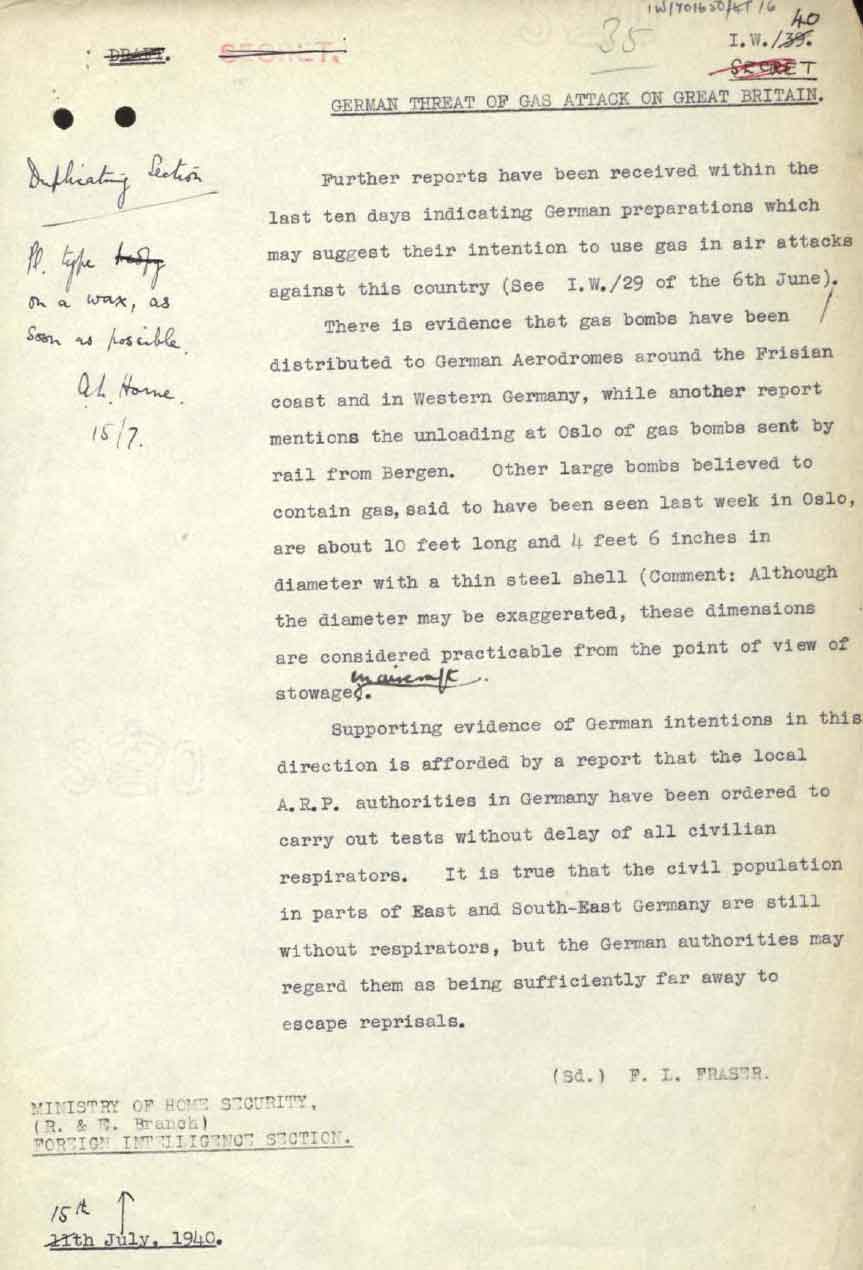|
The British government has released after 72 years a set of documents containing reports of German preparations for chemical and biological warfare against Britain in the Second World War.
This set of reports, which were classified as secret until June 2011, date from 1939 to 1941. The intelligence bulletins were produced by the British Home Office, Ministry of Home Security. The files contain a warning from British Intelligence that "reports are accumulating of German intention to use gas in an invasion of the UK".
The file details possible German plans including the use of mustard gas, a cloud gas attack from the sea, mortar shells infected with anthrax and even the "germs of foot and mouth disease". The documents include reports that the Germans were preparing to accuse Britain of using gas in order to justify their own use of it in retaliation.
Unlike World War I, which had 1.3 million chemical weapons causalities, chemical and biological warfare was avoided in Europe during World War II. William L. Shirer wrote in "The Rise and Fall of the Third Reich," that the British government considered the use of chemical weapons as a last-ditch defensive measure in the event of a Nazi invasion of Britain.
In 1944, Germany discovered the extremely toxic nerve agent soman. The U.S. Army later estimated that death from soman could occur two minutes after exposure. The British author Robert Frisk wrote that faulty German intelligence had concluded that the allies had also discovered this compound. Fear of massive retaliation prevented Germany from using Soman.
The United States kept chemical weapons in the European theater for use in case of an initial chemical weapons attack by Germany. On December 2, 1943, the SS John Harvey was destroyed by a German bomber while in the port of Bari, Southern Italy. The ship was carrying mustard gas. According to an Office of the Chief of Naval Operations report on the incident, out of 628 gas exposure casualties, "sixty-nine deaths were attributed in whole or in part to the mustard gas, most of them American merchant seamen" |
|
